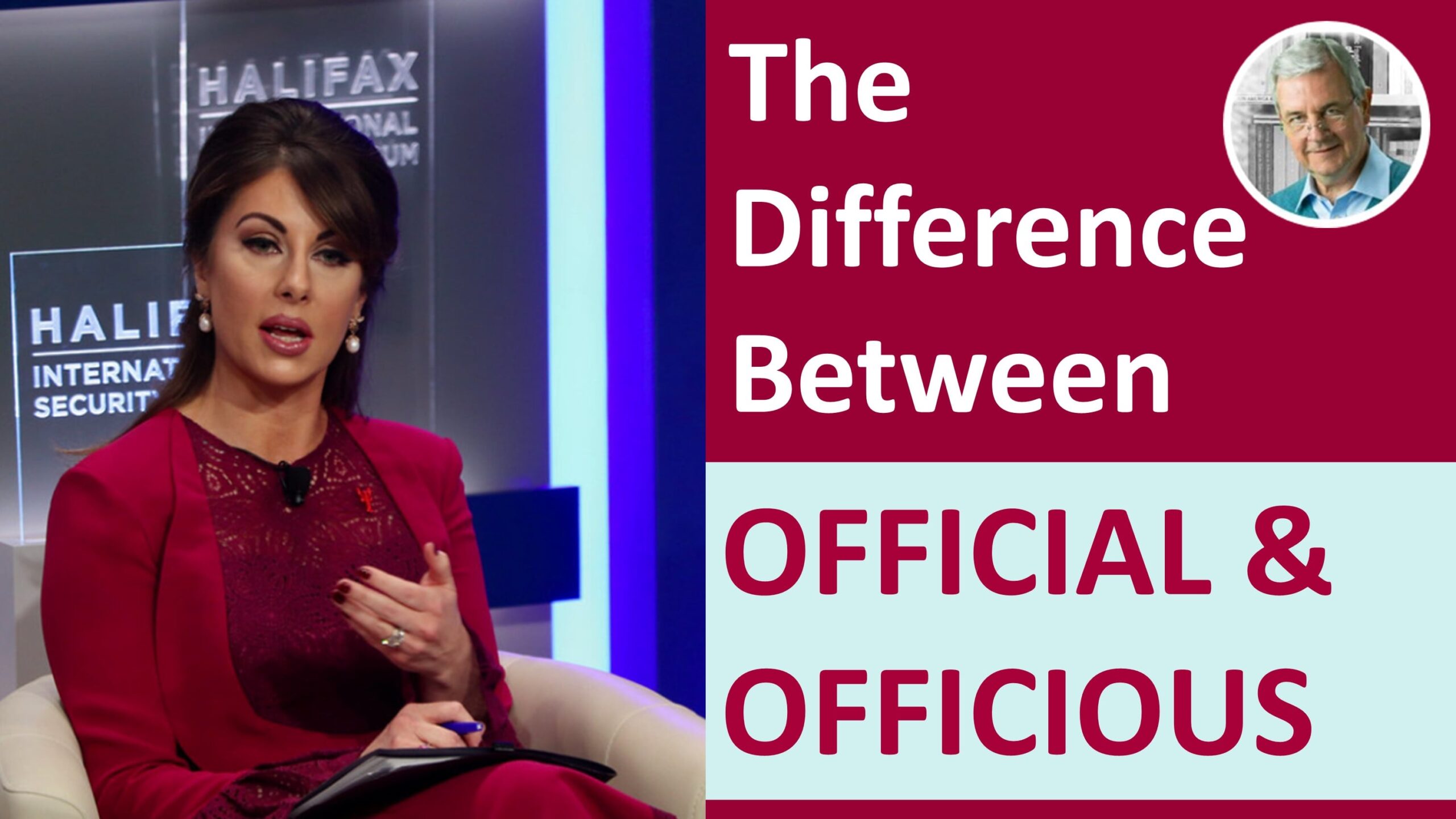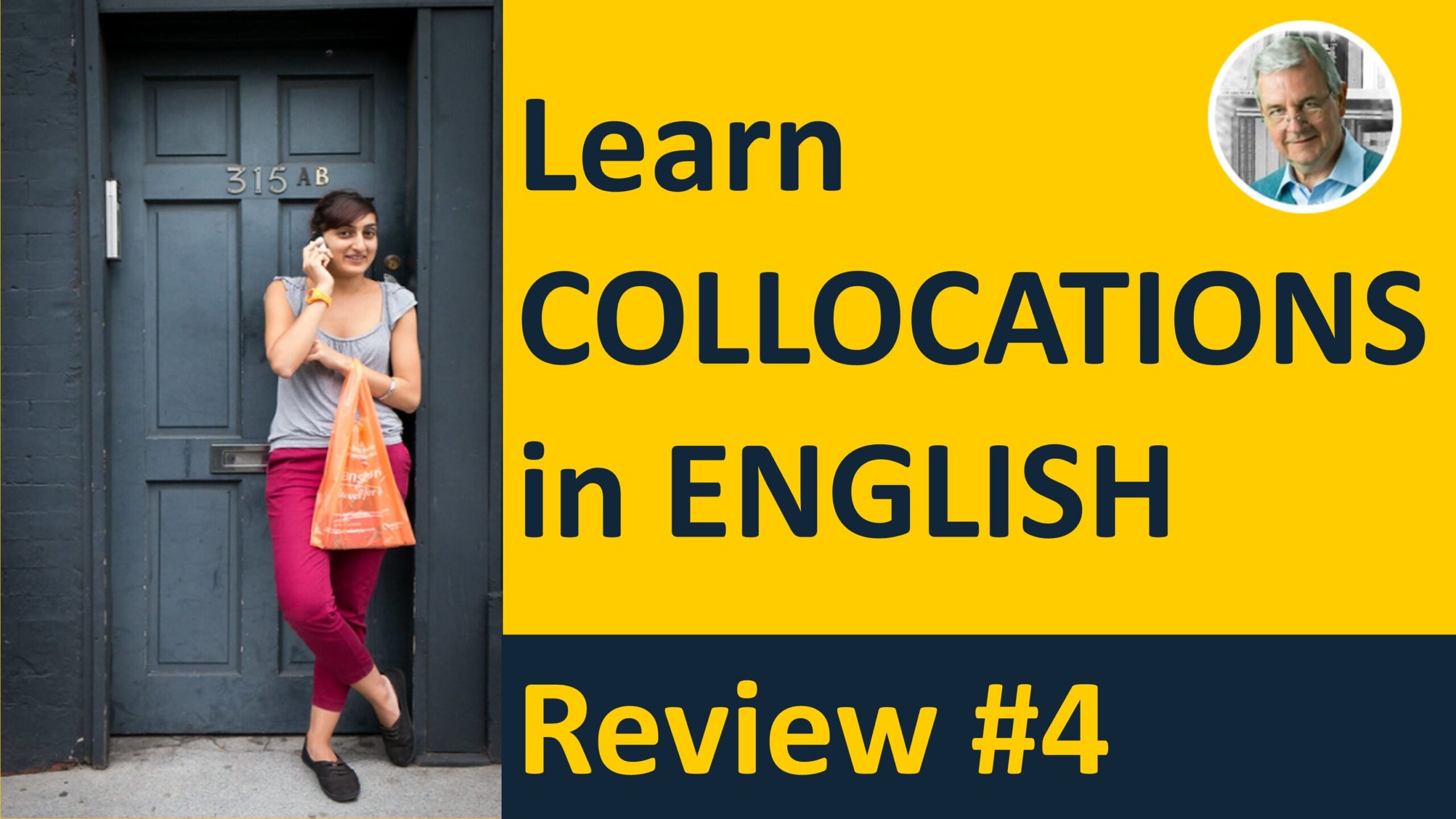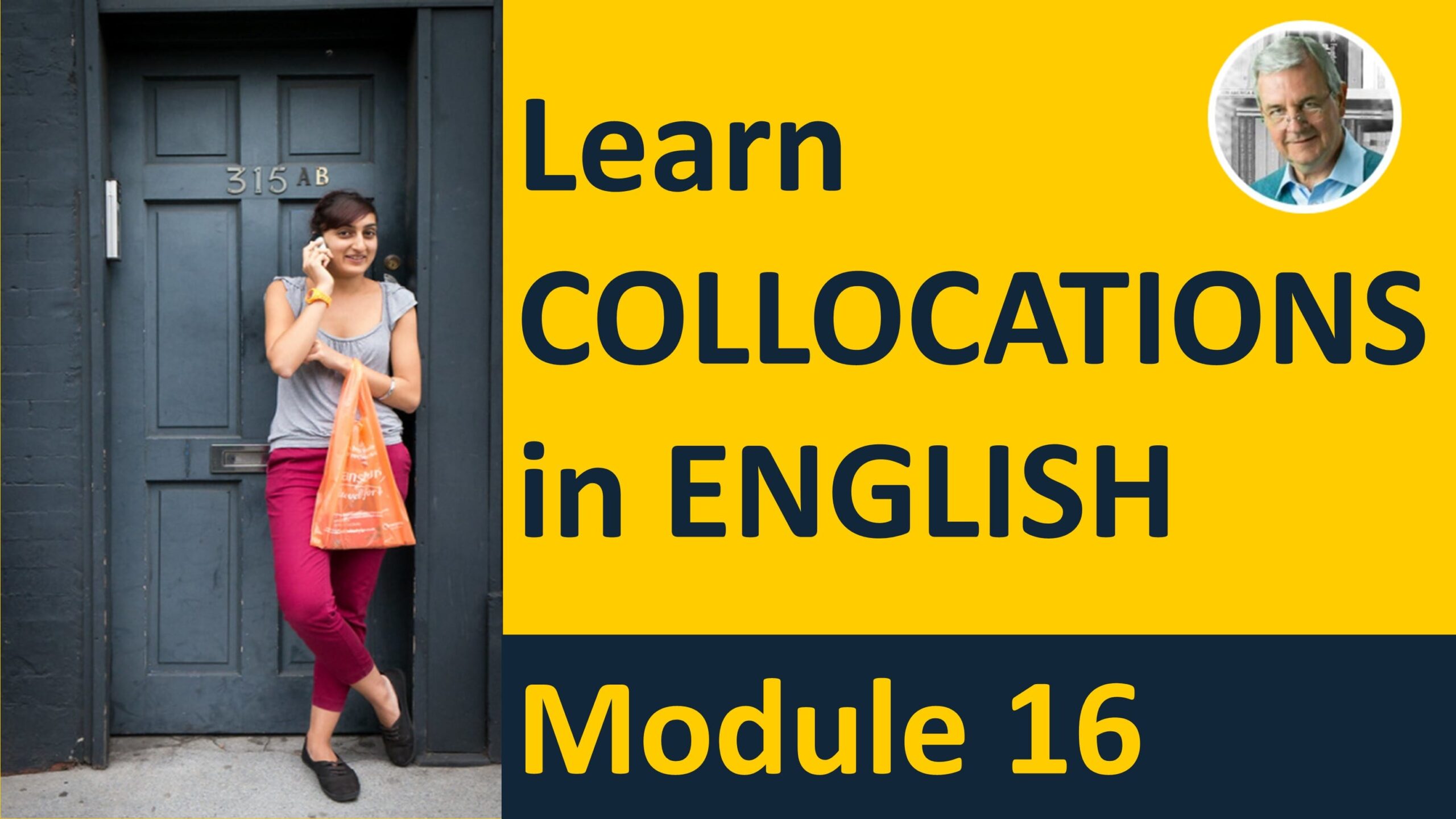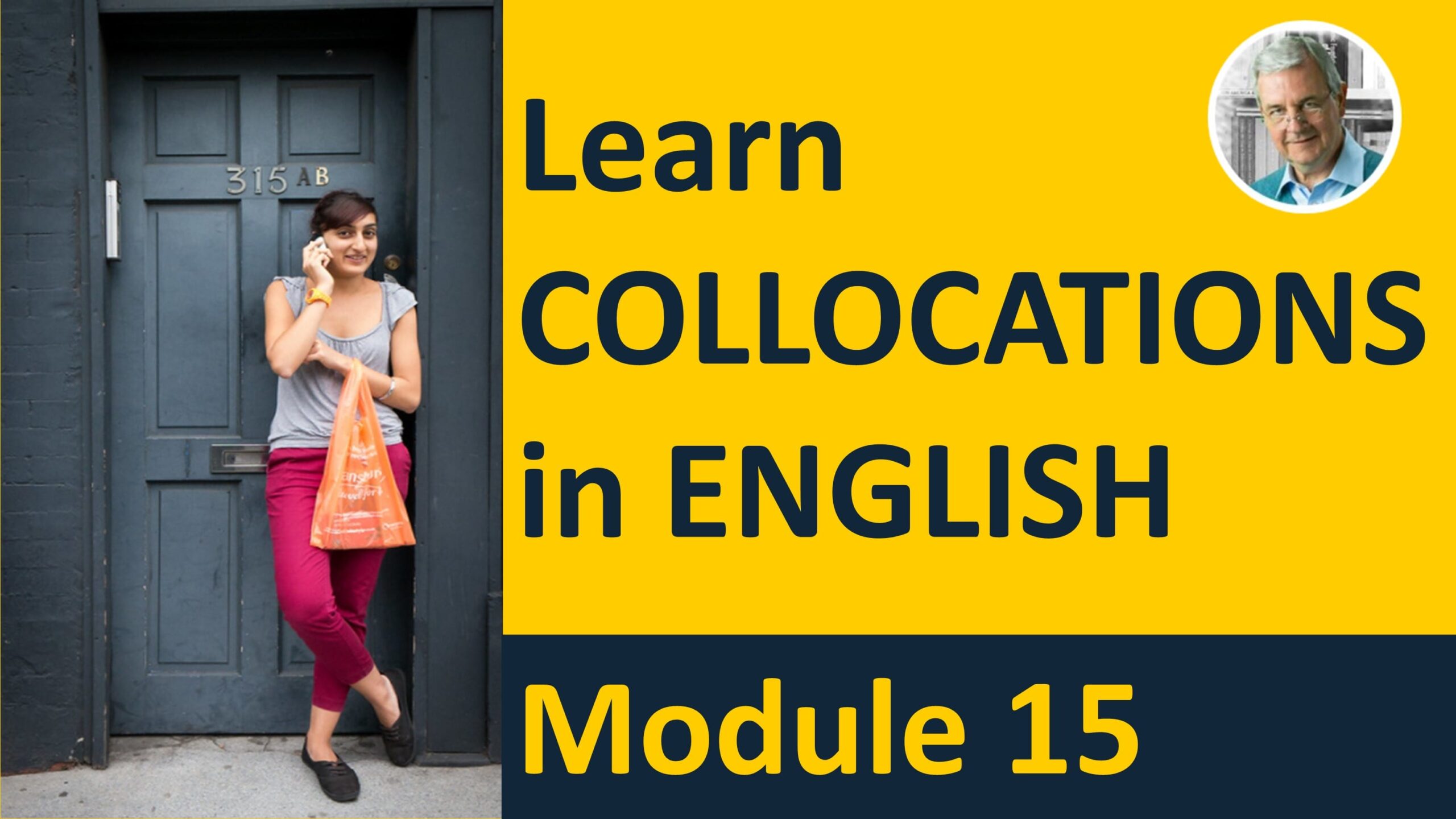ENGLISH COLLOCATIONS in Use – Module 9
ENGLISH COLLOCATIONS in Use – Module 9
Learning English collocations makes language learning much easier, and it can greatly improve your fluency and confidence. In this video we examine 5 common collocations.
Two illustrated examples are used for each of these common expressions which is then followed by two repeat Modules so these English collocations we well embedded in your memory. Prepositions can be very confusing for English students. Learn them as part of collocations in English and your accuracy will increase.
You will build a mental library of common English phrases. Spend a moment looking at the picture and then listen carefully as the sentence example using the collocation is used and start memorizing these daily English expressions.
A review and repeat section at the end will help you to commit these 5 collocations to memory. Even if you feel confident with these collocations, do the Repeat 2 exercise. It is done at a fast rate, and this will test whether you have instant recognition.
Here is a transcript of the video – Learn COLLOCATIONS in ENGLISH – Module 9
Slide 2:
Be sure to watch the introductory video to this playlist before doing this exercise.
Click on the link below in the Description . . .
(https://www.youtube.com/watch?v=AINOUe8C0UI)
Slide 3:
We will consider 5 common collocations:
- harbour resentment
- no laughing matter
- a cigarette dangling from his/her mouth
- change the subject/conversation
- conscious of the fact
Slide 4:
A quick reminder, Continually IMPROVE YOUR ENGLISH! Click the subscribe button NOW
Slide 5:
harbour resentment
(harbour: to give shelter or refuge to, or to hold in the mind
resentment: anger or bitterness due to feeling wronged or offended
Hence, harbour resentment means to keep feelings of anger or bitterness in the mind and heart, not letting go)
Slide 6:
After being the center of attention all his life, he harboured resentment against his baby sister after she was born.
Slide 7:
Harbouring resentment can have a negative effect on a person’s health, contributing to heart attacks, strokes, low immunity and skin conditions.
Slide 8:
no laughing matter
(not something to be taken lightly, something to be treated seriously)
Slide 9:
After the practical joke went wrong, his friend said: “This is no laughing matter. Someone could have been injured!”
Slide 10:
Finding termites under your house is no laughing matter.
Slide 11:
a cigarette dangling from his/her mouth
(a cigarette hanging or protruding downwards from a person’s mouth)
Slide 12:
This is a sketch based on an iconic photograph of movie icon James Dean, with a cigarette dangling from his mouth.
Slide 13:
As part of his rebellious image, Rolling Stones guitarist Keith Richards, would often perform on stage with a cigarette dangling from his mouth.
Slide 14:
change the subject/conversation
(start speaking about a different subject, often because the current subject is sensitive or causing an emotional response)
Slide 15:
When she saw her Dad getting upset about his upcoming operation, she said: “Let’s change the subject.”
Slide 16:
As the discussion began to get heated, he suggested it was time to change the conversation.
Slide 17:
conscious of the fact
(to be aware of something, to view something with seriousness)
Slide 18:
He was conscious of the fact that he was very late, and started to drive too fast.
Slide 19:
She was conscious of the fact she had put on a few kilos, and started jogging every afternoon.
Slide 20:
Again, the 5 collocations are:
- harbour resentment
- no laughing matter
- a cigarette dangling from his/her mouth
- change the subject/conversation
- conscious of the fact
Slide 64:
3 Action Steps . . .
- Did this video help you? LIKE, SHARE, or COMMENT now!
- Hit the SUBSCRIBE button now, click the Bell icon then click ALL so you don’t miss a single video!
- Enrol in my FREE English Vocabulary Builder course at
Go to: http://goodenglish.online
As you are interested in English collocations in use, be sure to view the video for module 8:
ENGLISH COLLOCATIONS in Use – Module 8
Image Credits
Slide 6 – angry boy
Creative Commons
https://flic.kr/p/9Y4yL
Slide 7 – tablets
Public Domain
https://flic.kr/p/KtcE2h
Slide 9 – scolding
Creative Commons
https://flic.kr/p/qPoW7
Slide 10 – termites
Creative Commons
https://flic.kr/p/btZtwb
Slide 12 – James Dean
Creative Commons
https://flic.kr/p/5amdhX
Slide 13 – Keith Richards
Creative Commons
https://flic.kr/p/dXYLKT
Slide 15 – family talking
Creative Commons
https://flic.kr/p/c8MvXC
Slide 16 – heated discussion
Creative Commons
https://flic.kr/p/73TPaW
Slide 18 – driving
Creative Commons
https://flic.kr/p/2ki3giL
Slide 19 – jogging
Creative Commons
https://flic.kr/p/GVnw4R
Regarding the use of illustrations and photographs used in this video:
Public Domain
Public domain works are not restricted by copyright and do not require a license or fee to use. Public domain status allows the user unrestricted access and unlimited creativity. These are typically very old works.
Creative Commons Attribution Licence
Others are allowed to copy, distribute, display, and perform copyrighted work – and derivative works based upon it if they give credit to the creator or source.
https://creativecommons.org/licenses/by/4.0/legalcode





